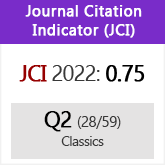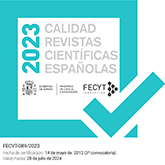Los orígenes griegos de una ciudad de Pisidia: Selge, Esparta y Calcante
DOI:
https://doi.org/10.3989/emerita.2016.03.1413Palabras clave:
Identidad helénica, syggéneia, parentesco, leyendas fundacionales, Selge, Pisidia, Esparta, CalcanteResumen
Una inscripción y una moneda imperiales atestiguan las estrechas relaciones que mantenían los selgeos de Pisidia con los lacedemonios del Peloponeso, basadas en un parentesco (syggéneia) forjado ya en época helenística como consecuencia de las conquistas de Alejandro Magno. Muchas comunidades indígenas anatolias, deseosas de ver reconocida su identidad helénica y adherirse a la cultura del poder, buscan o crean leyendas que vinculen sus orígenes con el mundo griego. En este contexto, los selgeos se emparentan con los lacedemonios, tal como refiere Polibio. Su fundamento, según las conclusiones de Curty (1995, 2001), debería ser un entronque mítico, pero del testimonio de Estrabón, que añade a Calcante como primer fundador, se desprende más bien un parentesco colonial. En las siguientes líneas se analiza el significado y la finalidad del parentesco espartano de Selge y de Calcante como su fundador mítico, así como su trasfondo real y ficticio.
Descargas
Citas
Aulock, H. von 1977: Münzen und Städte Pisidiens, I, Tubinga.
Bosworth, A. B. 1980: A historical commentary on Arrian's History of Alexander , I. Commentary on books I-III , Oxford.
Brixhe, C. 1976: Le dialecte grec de Pamphylie: documents et grammaire, París.
Brixhe, C. y Teko?lu, R. 2000: «Corpus des inscriptions dialectales de Pamphylie. Supplément 5», Kadmos 39, pp. 1-56. http://dx.doi.org/10.1515/kadm.2000.39.1-2.1
Bryce, T. R. 2003: «History», en Melchert, H. C. (ed.), The Luwians , Leiden-Boston, pp. 27-124. http://dx.doi.org/10.1163/9789047402145_004
Corsano, M. 1979: «Sparte et Tarente: le mythe de fondation d'une colonie», RHR 196, pp. 113-140. http://dx.doi.org/10.3406/rhr.1979.6913
Coulton, J. J. 2008: «Homer and the Solymians», en Kurtz, D. et al . (eds.), Essays in Classical archaeology for Eleni Hatzivassiliou 1977-2007, Oxford, pp. 17-25.
Curty, O. 1995: Les parentés légendaires entre cités grecques: catalogue raisonné des inscriptions contenant le terme ????????? et analyse critique, Ginebra.
Curty, O. 1999: «La parenté légendaire à l'époque hellénistique. Précisions méthodologiques», Kernos 12, pp. 167-194. http://dx.doi.org/10.4000/kernos.719
Curty, O. 2001: «Les parentés entre cités chez Polybe, Strabon, Plutarque et Pausanias», en Fromentin, V. y Gotteland, S. (eds.), Origines gentium [actes de 3 tables rondes, Bordeaux, décembre 1996-décembre 1997], Burdeos, pp. 49-56.
Curty, O. 2005: «Un usage fort controversé: la parenté dans la langage diplomatique de l'époque hellénistique», AncSoc 35, pp. 101-117. http://dx.doi.org/10.2143/AS.35.0.2003843
de Hoz, M. P. 2003: Introducción, traducción y notas a Estrabón, Geografía, libros XI-XIV (BCG 306) , Madrid.
de Hoz, M. P. 2006: «Los solymoi: identidad, pervivencia y relación con licios, milyai y kabaleis», Geographia antiqua 14-15, pp. 77-88.
Derks, T. y Roymans, N. 2009: Ethnic constructs in antiquity: the role of power and tradition, Ámsterdam. http://dx.doi.org/10.5117/9789089640789
Dowden, K. 1999: «Reviewed work: Mythische Vorväter. Zur Bedeutung griechischer Heroenmythen im Selbstverständnis kleinasiatischer Städte by Tanja Susanne Scheer», Gnomon 71 1, pp. 26-30.
Elwyn, S. F. 1991: The use of kinship terminology in Hellenistic diplomatic documents: an epigraphical study, Ann Arbor.
Faraguna, M. 2003: «Alexander and the Greeks», en Roisman, J. (ed.), Brill’s companion to Alexander the Great, Leiden-Boston, pp. 99-130.
Franke, P. R. y Nollé, M. K. 1997: Die Homonoia-Münzen und der thrakischen Randgebiete, I. Katalog, Saarbrücken.
French, D. H. 1994: «Isinda and Lagbe», en French, D. H. (ed.), Studies in the history and topography of Lycia and Pisidia. In memoriam A. S. Hall, Edimburgo, pp. 53-92.
Gonzales, M. 2005: «The oracle and cult of Ares in Asia Minor», GRBS 45, pp. 261-283.
Hall, A. S., Milner, N. P. y Coulton, J. J. 1996: «The mausoleum of Licinnia Flavilla and Flavianus Diogenes of Oinoanda: epigraphy and architecture», AS 46, pp. 111-144.
Hall, J. 1997: Ethnic identity in Greek antiquity, Cambridge. http://dx.doi.org/10.1017/CBO9780511605642
Hall, J. 2002: Hellenicity: between ethnicity and culture, Chicago.
Heller, A. 2006: «Ἀρχαιότης et εὐγένεια. Le thème des origines dans les cités d'Asie Mineure à l'époque impériale», en Zaidman, L. B. y Gherchanoc, F. (eds.), ?? ?????? dans les mondes grec et romain. Définitions et usages de la notion d'archaïsme , Ktèma 31, pp. 97-108.
Heller, A. 2009: «Généalogies locales et construction des identités collectives en Asie Mineure», en Bru, H., Kirbihler, F. y Lebreton, S. (eds.), L'Asie mineure dans l'antiquité: échanges, populations et territoires. Regards actuels sur une péninsule. Actes du colloque de Tours, 21-22 octobre 2005, Rennes, pp. 53-65.
Heubeck, A. 1985: «Zu einigen kleinasiatischen Ortsnamen», Glotta 63, pp. 115-136.
Jones, C. P. 1996: «The Panhellenion», Chiron 26, pp. 29-56.
Jones, C. P. 1999: Kinship diplomacy in the ancient world, Cambridge.
Jones, C. P. 2010: «Ancestry and identity in the Roman empire», en Whitmarsh, T. (ed.), Local knowledge and microidentities in the imperial Greek world, Cambridge, pp. 111-124.
Kearsley, R. A. 1994: «The Milyas and the Attalids: a decree of the city of Olbasa and a new royal letter of the second century BC», AS 44, pp. 47-57.
Kosmetatou, E. 1997a: «The hero Solymos on the coinage of Termessos Major», SNR 76, pp. 41-63.
Kosmetatou, E. 1997b: «Pisidia and the Hellenistic kings from 323 to 133 BC», AS 28, pp. 5-37.
Lasserre, F. 1981: Strabon. Géographie. Tome IX (livre XII), París.
Lücke, S. 2000: Syngeneia. Epigraphisch-historische Studien zu einem Phänomen der antiken griechischen Diplomatie, Fráncfort.
Luraghi, N. 2008: The ancient Messenians. Constructions of ethnicity and memory, Cambridge. http://dx.doi.org/10.1017/CBO9780511481413
Mac Sweeney, N. 2015: Foundation myths in ancient societies: dialogues and discourses, Filadelfia. http://dx.doi.org/10.9783/9780812290219
Malkin, I. 1994: Myth and territory in the Spartan Mediterranean, Cambridge.
Malkin, I. 2001: Ancient perceptions of Greek ethnicity, Cambridge.
Mitchell, S. 1991: «The hellenization of Pisidia», MedArch 4, pp. 119-145.
Musti, D. 1963: «Sull'idea di συγγένεια in iscrizioni greche», ASNP 32, pp. 225-239.
Nafissi, M. 1995: «Parte terza: la documentazione letteraria ed epigrafica», en Lippolis, E., Garraffo, S. y Nafissi, M. (eds.), Taranto. Culti greci in Occidente. Fonti scritte e documentazione archeologica, Tarento, pp. 155-334.
Nollé, J. 1992: «Zur Geschichte der Stadt Etenna in Pisidien», en Schwertheim, E. (ed.), Forschungen in Pisidien (Asia Minor Studien 6), Bonn, pp. 61-141.
Nollé, J. 2000: «Selge. Historisch-numismatisch Bemuhungen um die Kultur einer untergegangenen pisidischen Stadt», en Kluge, B. y Weisser, B. (eds.), XII. Internationaler
Numismatischer Kongress, Berlin 1997: Akten - proceedings - actes, Berlín, pp. 706-714.
Nollé, J. 2007: Kleinasiatische Losorakel: Astragal- und Alphabetchresmologien der hochkaiserzeitlichen Orakelrenaissance, Múnich.
Nollé, J. 2009: «Die taurische Artemis in Tauros: Zeugnisse und Überlegungen zum Artemiskult von Termessos in Pisidien», en Tekin, O. (ed.), Ancient history, numismatics and epigraphy in the Mediterranean world: studies in memory of Clemens E. Bosch and Sabahat Atlan and in honour of Nezahat Baydur, Estambul, pp. 275-289.
Nollé, J. y Schindler, F. 1991: Die Inschriften von Selge (IGSK 37), Bonn.
Paluchowski, A. 2008: «Les relations entre les villes de Crète centrale et celles de Pisidie et Phrygie sous le Haut-Empire: Gortyne et Selgé, Arkadès et Tibériopolis de Phrygie», DHA 34 (1), pp. 45-57. http://dx.doi.org/10.3406/dha.2008.3053
Patterson, L. 2010: Kinship myth in ancient Greece, Austin.
Robert, L. 1977: «Documents d'Asie Mineure», BCH 101, pp. 43-132. http://dx.doi.org/10.3406/bch.1977.2016
Robert, L. 1983: «Documents d'Asie Mineure», BCH 107, pp. 562-667. http://dx.doi.org/10.3406/bch.1983.1898
Romeo, I. 2002: «The Panhellenion and ethnic identity in Hadrianic Greece», CPh 97 (1), pp. 21-40. http://dx.doi.org/10.1086/449565
Ruby, P. 2006: «Peuples, fictions? Ethnicité, identité ethnique et sociétés anciennes», REA 108 1, pp. 25-60.
Saïd, S. 2001: «The discourse of identity in Greek rhetoric from Isocrates to Aristides», en Malkin, I. (ed.), Ancient perceptions of Greek ethnicity, Cambridge, pp. 275-298.
Sartre, M. 1994: El Oriente romano. Provincias y sociedades provinciales del Mediterráneo oriental, de Augusto a los Severos, Madrid.
Scheer, T. S. 1993: Mythische Vorväter. Zur Bedeutung griechischer Heroenmythen im Selbstverständnis kleinasiatischer Städte, Múnich.
Spawforth, A. J. y Walker, S. 1986: «The world of the Panhellenion II. Three Dorian cities», JRS 76, pp. 88-105. http://dx.doi.org/10.2307/300367
Stroud, R. S. 1984: «An Argive decree from Nemea concerning Aspendos», Hesperia 53, pp. 193-216. http://dx.doi.org/10.2307/147962
Strubbe, J. H. M. 1984: «Gründer kleinasiatischer Städte. Fiktion und Realität», AncSoc 15/17, pp. 253-304.
Takmer, B. y Gökalp, N. 2005: «Inscriptions from the sanctuary of Μήτηρ Θεῶν Ουεγεινος at Zindan Magarası I», Gephyra 2, pp. 103-113.
Talloen, P. 2015: Cult in Pisidia: religious practice in southwestern Asia Minor from Alexander the Great to the rise of Christianity, Turnhout.
Thériault, G. 1996: Le culte d'homonoia dans les cités grecques, Quebec.
Vanhaverbeke, H. y Waelkens, M. 2005: «'If you can't beat them, join them?' The hellenization of Pisidia», MedArch 18, pp. 49-65.
Waelkens, M. 2000: «Sagalassos and Pisidia during the Late Bronze Age», en Wae lkens, M. y Loots, L. (eds.), Sagalassos V: report on the survey and excavation campaigns of 1996 and 1997 (Acta Archaeologica Lovaniensia Monographiae 11A and B), Lovaina, pp. 473-485.
Waelkens, M. 2004: «Ein Blick von der Ferne. Seleukiden und Attaliden in Pisidien», MDAI(I) 54, pp. 435-471.
Walbank, F. W. 1957: A historical commentary of Polybius, I. Commentary on books I-VI , Oxford.
Weiss, P. 1984: «Lebendiger Mythos. Gründerheroen und städtische Gründungstraditionen im griechisch-römischen Osten», WJA 10, pp. 179-208.
Woodward, A. M. 1953: «Sparta and Asia Minor under the Roman Empire», en Mylonas, G. E. y Raymond, D. (eds.), Studies presented to D. M. Robinson, II, San Luis, pp. 868-883.
Woolf, G. 1994: «Becoming Roman, staying Greek: culture, identity and the civili zing process in the Roman east», PCPhS, pp. 116-143.
Zgusta, L. 1984: Kleinasiatische Ortsnamen, Heidelberg.
Descargas
Publicado
Cómo citar
Número
Sección
Licencia
Derechos de autor 2016 Consejo Superior de Investigaciones Científicas (CSIC)

Esta obra está bajo una licencia internacional Creative Commons Atribución 4.0.
© CSIC. Los originales publicados en las ediciones impresa y electrónica de esta Revista son propiedad del Consejo Superior de Investigaciones Científicas, siendo necesario citar la procedencia en cualquier reproducción parcial o total.Salvo indicación contraria, todos los contenidos de la edición electrónica se distribuyen bajo una licencia de uso y distribución “Creative Commons Reconocimiento 4.0 Internacional ” (CC BY 4.0). Puede consultar desde aquí la versión informativa y el texto legal de la licencia. Esta circunstancia ha de hacerse constar expresamente de esta forma cuando sea necesario.
No se autoriza el depósito en repositorios, páginas web personales o similares de cualquier otra versión distinta a la publicada por el editor.














